Noah Planavsky
Assistant Professor
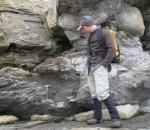 I study the connections between the evolution of Earth-system processes, biological innovation, and ecosystem change—foremost in Earth’s early history. My research integrates field, petrographic, and geochemical work. The protracted rise of oxygen over several billion years dramatically changed Earth’s surface environments. However, our current picture of Earth’s redox evolution is still painted with only broad strokes. A central theme of my research has been trying to piece together the history and effects of Earth’s oxygenation. With that end goal in mind, I am currently working on coupling paleoredox proxies in Precambrian sedimentary rocks, calibrating novel metal isotopes systems in modern aqueous systems, and untangling the distribution and diagenetic history of traces metals in sedimentary rocks.
I study the connections between the evolution of Earth-system processes, biological innovation, and ecosystem change—foremost in Earth’s early history. My research integrates field, petrographic, and geochemical work. The protracted rise of oxygen over several billion years dramatically changed Earth’s surface environments. However, our current picture of Earth’s redox evolution is still painted with only broad strokes. A central theme of my research has been trying to piece together the history and effects of Earth’s oxygenation. With that end goal in mind, I am currently working on coupling paleoredox proxies in Precambrian sedimentary rocks, calibrating novel metal isotopes systems in modern aqueous systems, and untangling the distribution and diagenetic history of traces metals in sedimentary rocks.
Alan Rooney
Assistant Professor

I am interested in understanding the interactions between tectonics, climatic processes and geochemical cycles on a range of time scales. I use radiogenic isotope geochemistry, in particular the rhenium-osmium (Re-Os) geochronometer, Sr and Nd isotopes combined with field-based mapping, sedimentology, stratigraphy and mineralogy to interrogate the rock record of critical transitions in Earth history. My near-term research interests are centered on three main areas: 1) refining Earth history records, with a focus on the co-evolution of life and the environment during the Proterozoic; 2) investigating the geochemical evolution of continental crust and mantle-lower crustal processes and; 3) combining geochemical proxies from sedimentary cores to better understand ocean-ice sheet dynamics from the Pliocene to the Holocene.
Dan Asael
Associate Research Scientist
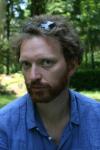 I have operated the MC-ICP-MS machine under various projects and measuring a large variety of isotopic systems (e.g., Si, Fe, Ni, Cu, Mo, Nd, Sm and Pb). The work has included collaboration with scientists from IFREMER and from other research institutes and universities. Development and calibration of isotopic measurements by laser ablation MC-ICP-MS methods. Guiding students in all aspects of clean lab work and isotopic measurements.
I have operated the MC-ICP-MS machine under various projects and measuring a large variety of isotopic systems (e.g., Si, Fe, Ni, Cu, Mo, Nd, Sm and Pb). The work has included collaboration with scientists from IFREMER and from other research institutes and universities. Development and calibration of isotopic measurements by laser ablation MC-ICP-MS methods. Guiding students in all aspects of clean lab work and isotopic measurements.
Studying Mo isotopes (and possibly other metallic isotope systems) of Mesoproterozoic - Neoproterozoic sediments from the Mbuji-Mayi Supergroup of Congo. The ca. 1300 – 800 Ma Mbuji-Mayi Supergroup is associated with great climatic and biological changes also linked to the assembly (~ 1000 Ma) and break-up (~ 850 Ma) of Rodinia. In this project I attempt to reconstruct the paleo-redox conditions of the ocean and atmosphere during this time window using isotopic compositions of metallic elements. Other aspects of this project include the study of microfossils, carbon and oxygen isotopes and TOC.
Donald Penman
Postdoctoral Fellow - Joint Hull-Planavsky Labs
 My research focuses on the interplay between Earth’s climate and the fluxes of carbon from the lithosphere into the atmosphere, ocean, and finally into sediments. As the oceans represent the largest surficial reservoir of carbon, characterizing the marine carbon cycle is crucial to understanding the long-term regulation of atmospheric pCO2 and climate.
My research focuses on the interplay between Earth’s climate and the fluxes of carbon from the lithosphere into the atmosphere, ocean, and finally into sediments. As the oceans represent the largest surficial reservoir of carbon, characterizing the marine carbon cycle is crucial to understanding the long-term regulation of atmospheric pCO2 and climate.
I am trained in a suite of inorganic proxies for carbonate chemistry and climatic parameters preserved in geological archives, particularly deep-sea sediment cores from the Cenozoic.
Leslie (Jamie) Robbins
Donnelley Environmental Postdoctoral Associate
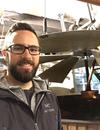 My research is focused on understanding how sedimentary archives, such as banded iron formations, shales, and other chemical sediments, can be used to assess changes in surface environments over Earth’s 4-billion-year history. I’m particularly interested in how these changes either drive or respond to biological evolution and the development of novel geochemical proxies to assess past climate variability. Additional areas of interest include the biogeochemical cycling of trace elements, geobiology in ancient and modern environments, and particle surface reactivity.
My research is focused on understanding how sedimentary archives, such as banded iron formations, shales, and other chemical sediments, can be used to assess changes in surface environments over Earth’s 4-billion-year history. I’m particularly interested in how these changes either drive or respond to biological evolution and the development of novel geochemical proxies to assess past climate variability. Additional areas of interest include the biogeochemical cycling of trace elements, geobiology in ancient and modern environments, and particle surface reactivity.
Ming-Yu Zhao
Postdoctoral Associate
 I work mainly on geochemistry of sediments and biogeochemical modelling. Through geochemical analysis on both modern and ancient sediments as well as model works, I’m trying to understand whether the ancient rock records can capture the seawater chemistry and how the long-term changes in seawater chemistry can be linked with crust dynamics, biological renovation and atmospheric evolution.
I work mainly on geochemistry of sediments and biogeochemical modelling. Through geochemical analysis on both modern and ancient sediments as well as model works, I’m trying to understand whether the ancient rock records can capture the seawater chemistry and how the long-term changes in seawater chemistry can be linked with crust dynamics, biological renovation and atmospheric evolution.
Drew Syverson
Flint Postdoctoral Fellow
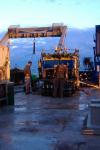 Experimental geochemistry utilizing isotopic techniques to better understand water-rock interactions associated with atmosphere-ocean CO2 buffering mechanisms.
Experimental geochemistry utilizing isotopic techniques to better understand water-rock interactions associated with atmosphere-ocean CO2 buffering mechanisms.
Changle Wang
Postdoctoral Fellow
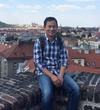
Joachim (Jo) Katchinoff
PhD Student

Tom Reershemius
PhD Student
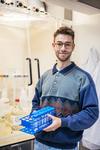 My research uses techniques from sedimentology and geochemistry to answer questions about the coupled evolution of biogeochemical cycles and life during Earth’s history, primarily in the Proterozoic where our understanding of these processes is sparse. Examples include using trace metal isotope proxies to assess oxygenation of marine environments, field measurements to examine the early silica cycle, and examining fossils of early lifeforms.
My research uses techniques from sedimentology and geochemistry to answer questions about the coupled evolution of biogeochemical cycles and life during Earth’s history, primarily in the Proterozoic where our understanding of these processes is sparse. Examples include using trace metal isotope proxies to assess oxygenation of marine environments, field measurements to examine the early silica cycle, and examining fossils of early lifeforms.
Brian Beaty
PhD Student
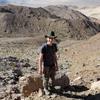 I study the coevolution of life, climate, and biogeochemical cycles across Earth history via sedimentological and stratigraphic fieldwork, geochemical analysis, and numerical modelling. I am particularly interested in the role that metabolic and ecological innovations have played in shaping biogeochemical cycles, from the advent of oxygenic photosynthesis in the Archean to sediment mixing by burrowing animals in the Phanerozoic.
I study the coevolution of life, climate, and biogeochemical cycles across Earth history via sedimentological and stratigraphic fieldwork, geochemical analysis, and numerical modelling. I am particularly interested in the role that metabolic and ecological innovations have played in shaping biogeochemical cycles, from the advent of oxygenic photosynthesis in the Archean to sediment mixing by burrowing animals in the Phanerozoic.